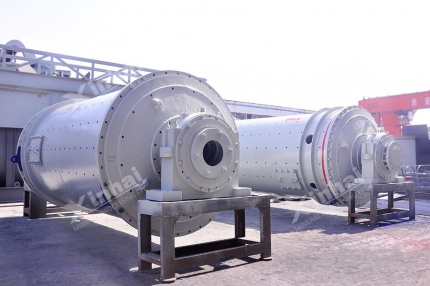In the ore processing process, the ore grinding stage is an important part of it, which affects the efficiency of subsequent beneficiation and the recovery rate and grade of concentrate. Therefore, when designing the beneficiation process, the appropriate grinding process should be selected according to the characteristics of the ore itself. Under normal circumstances, the concentrator will choose one-stage grinding process or two-stage grinding process. What is the difference between these two grinding processes? What are their strengths and weaknesses? The following two grinding processes will be introduced in detail for you.

Use the table of contents below to navigate through the guide:
01Advantages of one-stage ore grinding process
1. One-stage grinding process is equipped with a small number of classifying equipment, which can reduce the cost of equipment purchase.
2. The one-stage grinding process is relatively simple, and the production operation and adjustment are easy.
3. Since there is only one stage of grinding, there is no transportation of intermediate products, and various series of grinding equipment can be placed on the same level, so the configuration of grinding equipment is simple.
4. If the classifying equipment or grinding equipment in the grinding process is shut down, other grinding stages will not be affected, resulting in less loss due to downtime.

02Disadvantages of one-stage ore grinding process
1. The size range of the ore fed into the grinding equipment is wide, which makes it difficult to load the balls in the equipment, resulting in low grinding efficiency.
2. The classified overflow fineness of primary grinding generally accounts for about 60% of -200 mesh ore, so it is not easy to obtain finer grinding products.
To sum up, if the particle size of the grinding product is required to be larger than 0.2-0.15mm, a one-stage grinding process is generally adopted. For small concentrators who want to simplify the grinding process and equipment configuration, and require grinding fineness -200 mesh ore to account for 80%, a one-stage grinding process can also be used.

03Advantages of two-stage ore grinding process
1. Coarse grinding and fine grinding of ore can be carried out in different grinding stages, and different grinding conditions can also be used in these two grinding stages.
When performing coarse grinding, loading larger steel balls and increasing the rotating speed can effectively improve the grinding efficiency.
When performing fine grinding, loading smaller steel balls and reducing the rotating speed can also improve the grinding efficiency.
2. Two-stage grinding can be applied to stage separation. When dealing with ores with uneven distribution and high specific gravity, the sorting operation that can be used in the grinding cycle can sort out the minerals that have achieved monomer dissociation in time, avoiding over-crushing, and improving the quality index of ore dressing. In addition, in this process, the accumulation of heavy metal minerals in the classified sand return is greatly reduced, which improves the working efficiency of the classifying equipment.
To sum up, for medium and large concentrators, if the grinding fineness requirement is less than 0.15mm, a two-stage grinding process can be adopted. The two-stage grinding process can reduce power consumption, obtain grinding products with uniform particle size distribution, reduce over-grinding problems, and further improve the beneficiation index.

04How to determine the number of ore grinding stages?
Grinding equipment usually forms a grinding and classifying process with classifying equipment. The grinding equipment grinds the ore, and the classifying equipment divides the grinding products into qualified products and unqualified products. Unqualified products will be returned to the grinding equipment for regrinding to improve their particle size. The classification process and the regrinding process of returning sand constitute a grinding stage. Classifying operations can be divided into pre-classifying, production reduction classifying, and control classifying. A classifying operation can be a single type or a combination of two classifying operations. When using the two-stage grinding process, if the first stage uses a rod mill, classification operations are not required.

05What factors will affect the determination of the number of grinding stages?
Generally, the main factors affecting the number of ore grinding stages are the properties of the ore itself, such as the grindability of ore and the embedded distribution characteristics of minerals. The second is production requirements, such as the size of grinding products, the scale of beneficiation production, the necessity of processing ore and slime, and the necessity of stage separation. In actual production, whether it is a one-stage or two-stage grinding process, the ore can be ground and sorted to the required particle size, and there is no need to use redundant grinding stages. Usually, increasing the number of grinding stages needs to be determined by the stage separation requirements.

The above is a brief introduction about the advantages and disadvantages of one-stage and two-stage ore grinding process. When determining the ore grinding process, the appropriate grinding process should be selected. Xinhai Mining recommends mineral beneficiation test analysis, which can determine the characteristics of the ore itself and serve as the basis for determining the grinding process. Xinhai Mining can provide you with customized mineral processing services, from mineral beneficiation test, mineral processing process design, equipment manufacturing, installation and commissioning to mine operation management, welcome to consult.


 marketing@ytxinhai.com
marketing@ytxinhai.com  0086 13810327080
0086 13810327080 






































































































 CHAT
CHAT MESSAGE
MESSAGE





.jpg)


